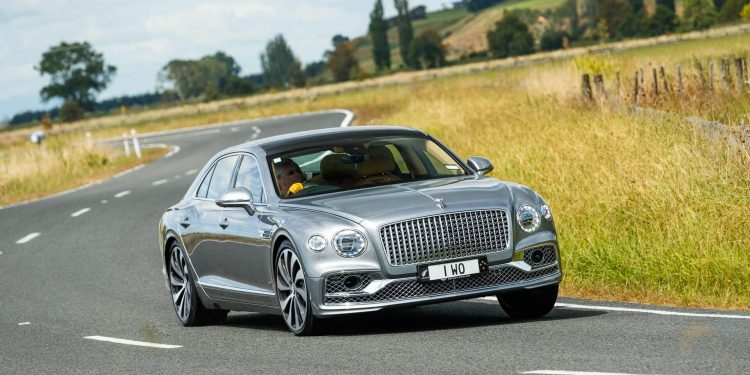2023 Bentley Flying Spur Hybrid review
Words: Peter Louisson | Photos: Tom Gasnier
The need to reduce emissions even includes top-end brands and Bentley recently let us loose in its first electrified vehicle to land here, the Flying Spur hybrid.
It’s a story of both beginnings and ends. Just as the first hybrid from Bentley dots down here in the form of the plug-in Flying Spur, the long-lived V12 (actually W12 but whatever) is to be put to rest; in production since 2003, it will be extinguished in 2024.
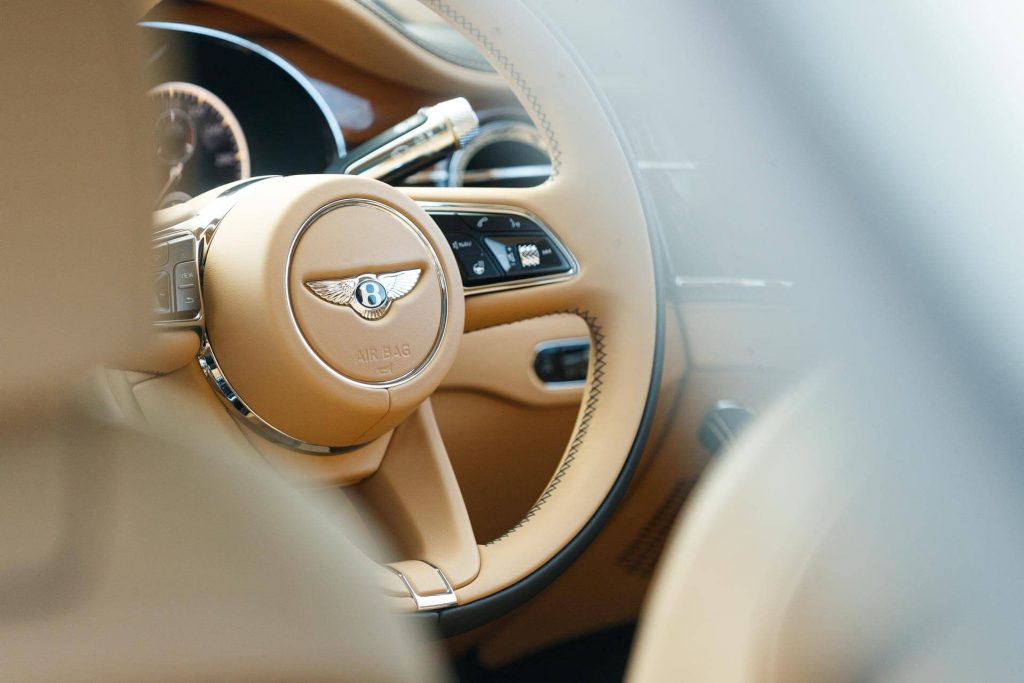
And this won’t be Bentley’s only hybrid either because the Bentayga variant is flying in soon (oddly with a slightly different 3.0-litre engine from that in the Flying Spur, which uses a 2.9), and will be followed in time by a V8 hybrid in the Conti GT. Eventually full battery electric models will be on the menu.
While only in our tenure for eight hours, we got a decent idea of how it fits into the line-up. Well, reasonably decent. Unfortunately, due to an honest error, we arrived to pick it up with just 11km of EV range remaining; the battery pack is supposedly capable of supplying the vehicle with 40km of emissions-free travel.
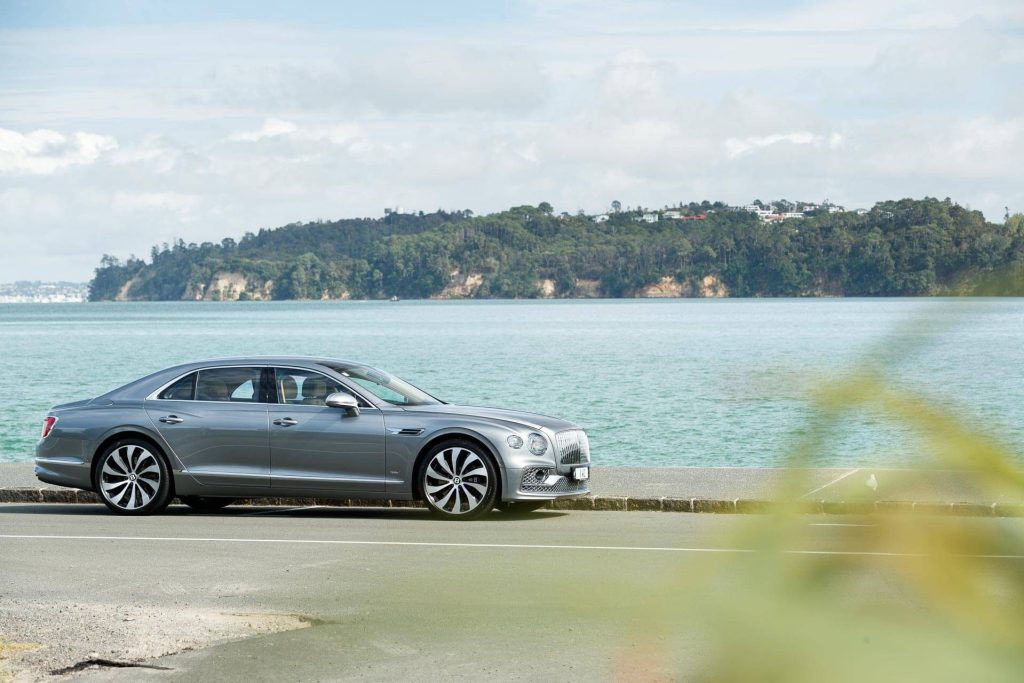
So essentially we only got a handful of kilometres in pure EV mode. They were, as you might imagine, ultra-refined, and with an electric powertrain it is the very definition of stealthy, despite its size.
It’s hardly a lightweight either at 2.5 tonnes but with good reason; the four-door saloon is 5.3m long and almost 2m wide, carries an 18kWh battery, an electric motor and a bi-turbo V6 up front. It’s all-wheel driven too, the 100kW motor connected to the front wheels, the V6 driving the rears.
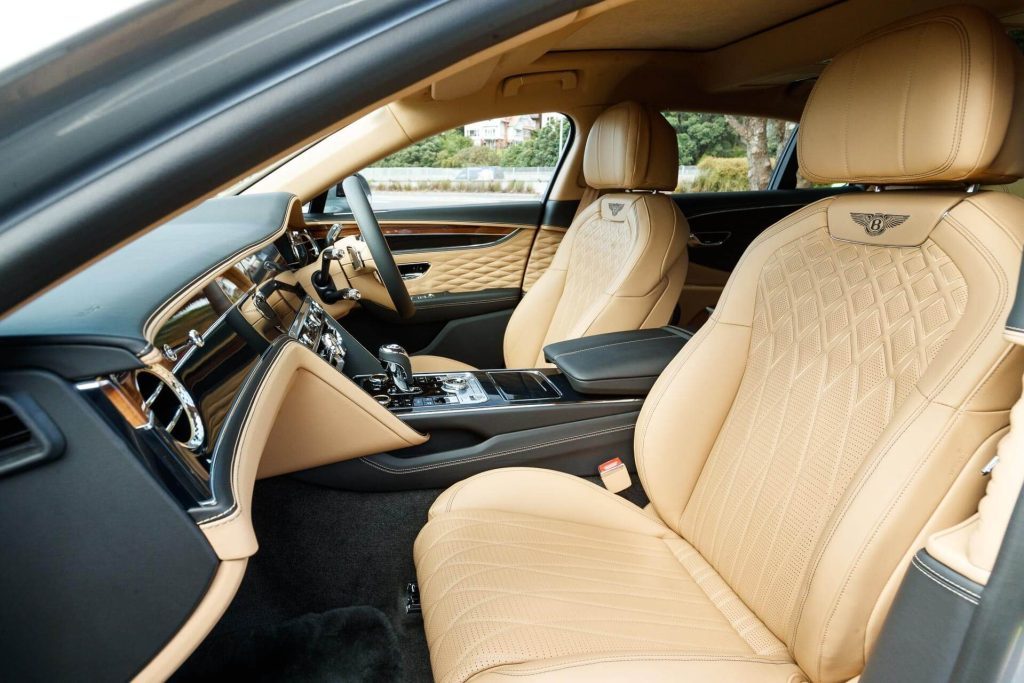
In electric-only mode it’s said to be capable of 140km/h, plenty enough for town and a little motorway running we’d have thought, though range is limited to 40km. That’s enough though for the average daily trip, roughly 28km for Kiwis.
But if it’s used on a daily basis, owners will need to remember to plug in each night to get the most from its PHEV drivetrain. Or should that be the least in terms of noise and emissions? Otherwise, you’ll be driving it like we did; in hybrid mode.
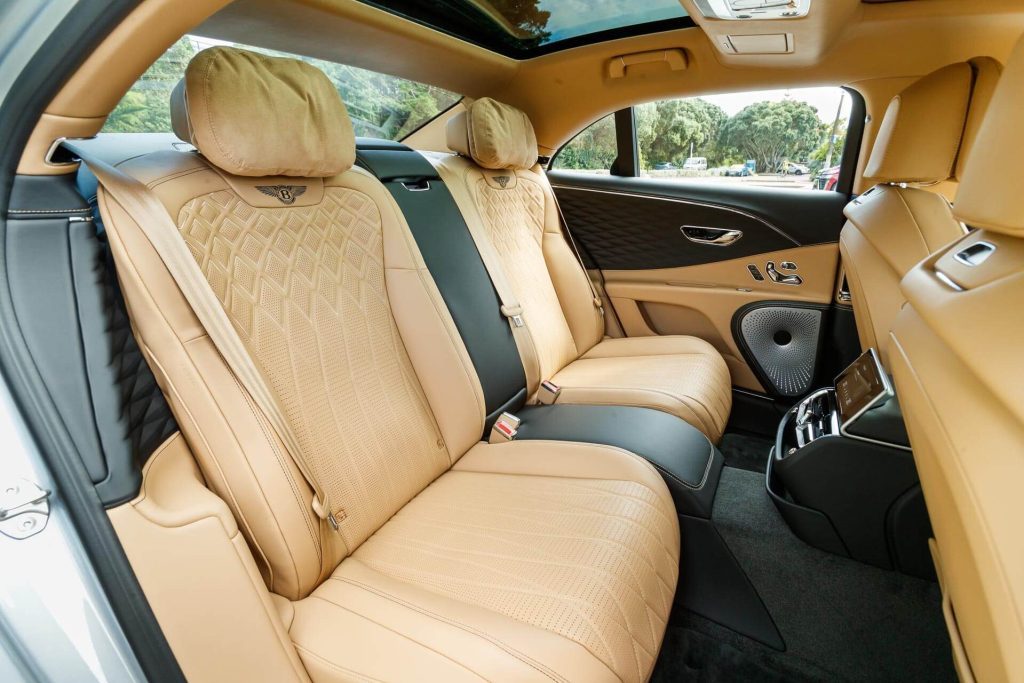
One clever thing about PHEVs is that even when the battery is supposedly drained it actually isn’t quite while its energy levels are constantly regenerated by on-board systems, when braking or coasting.
So as you ease away from a standstill or need extra oomph for overtaking the motor always helps out, regardless of the battery’s apparent state of discharge.
So how was fuel use?
As you might expect with “only” a V6, the hybrid is the least quick of the trio of Flying Spurs. But the margins are slim and the hybrid is potentially much more abstemious on hydrocarbons on account of its e-Drive and smaller engine.
Bentley states a weighted WLTP combined fuel use figure of 3.2L/100km (73g/km) but that’s the laboratory test; real world results differ. Somehow, the Rightcar website suggests 11.5L/100km overall.

We took the big bird on a typical drive (well, for us anyway) to the Seabird Coast, taking in a mix of free-flowing and March Madness motorway driving. Towards the end of the day, we saw a fuel use figure of 13.1L/100km.
WLTP figures reckon on a high of 15.2L/100km and we never saw that in our time with the vehicle. Used properly, with regular charging, this could well be one of those vehicles in which 80L of fuel in the tank lasts the better part of a month rather than days.
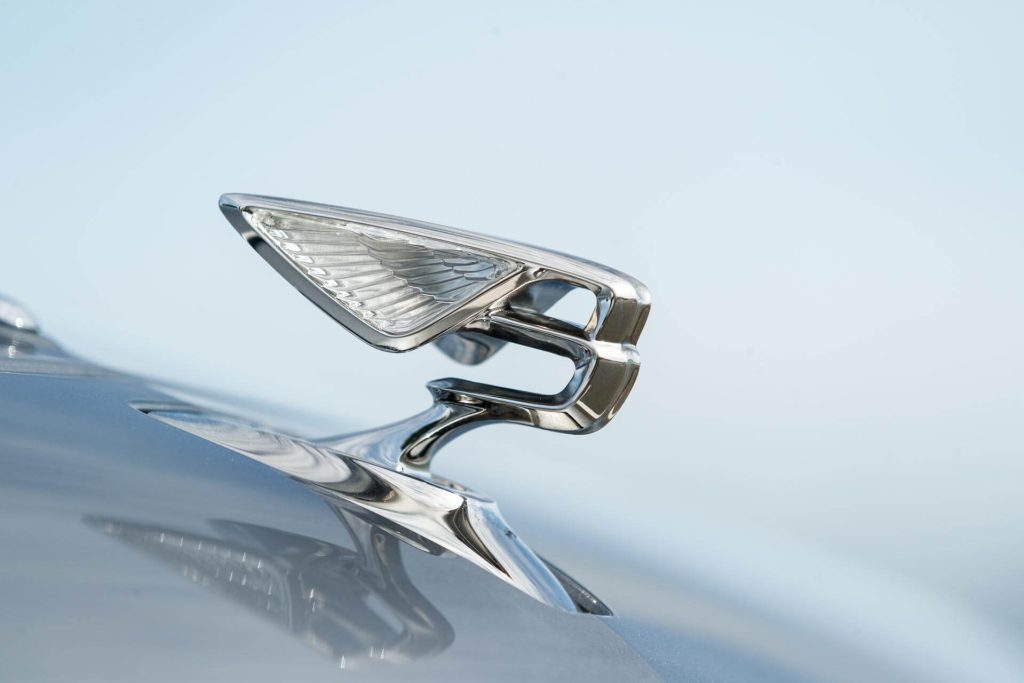
But we’d imagine most won’t see single figure fuel use much if they forget to (or grow tired) of plugging it in every time it’s parked up. Also, the 103kW/400Nm electric motor doesn’t give much in the way of ‘effortless performance’ which is typical of others in the family.
Extend the right ankle much and the engine will kick in. When the motor urge is combined with the 306kW/550Nm output of the 2.9 V6 (borrowed from the wider VW group) its overall output of 400kW and 750Nm will give the conventional Spurs a proper run for their money.
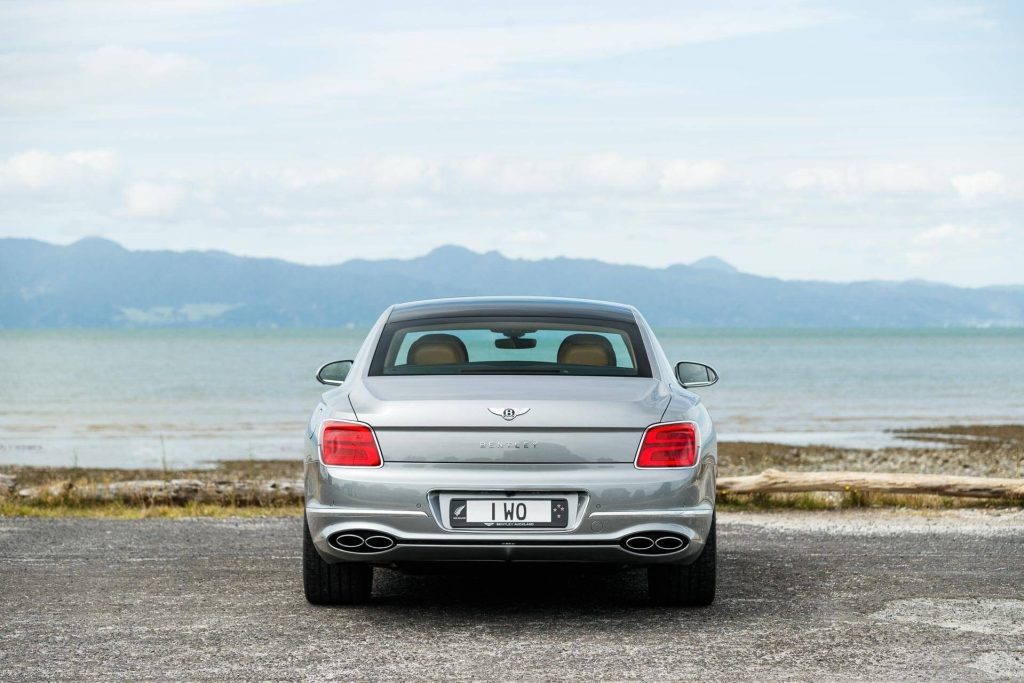
We optimised the driveline which sees it launch off the mark with 4000rpm showing and it managed a best of 4.4sec to 100km/h on a chipseal surface, the eight-speed twin-clutch blazing away.
That’s only 0.2sec behind the V8 Flying Spur. The 80-120 overtake test was completed comfortably inside of three seconds, plenty enough for dispensing with waifs and strays impeding your progress.
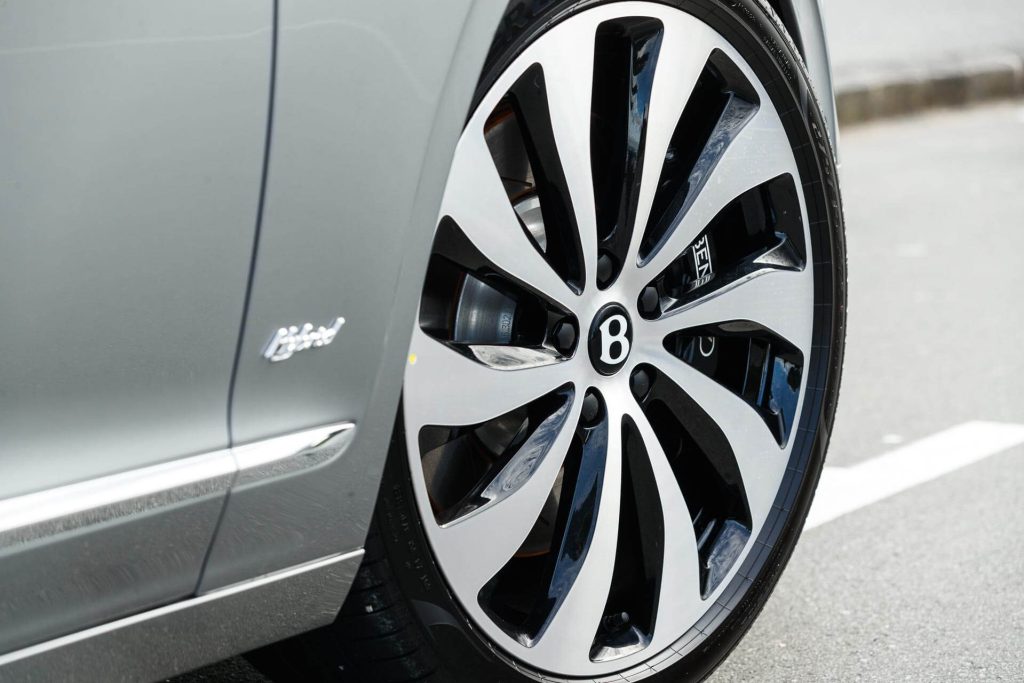
Limo thinks it’s a GT?
And this large car performs in the corners too. While it may look like a waft meister, there is a little more to it than that. The Flying Spur is all about the drive, as the name suggests.
The hybrid doesn’t have rear wheel steering on account of its battery pack requiring the space, but it still has air suspension which imbues it with excellent waft-ability, even when on 22s.
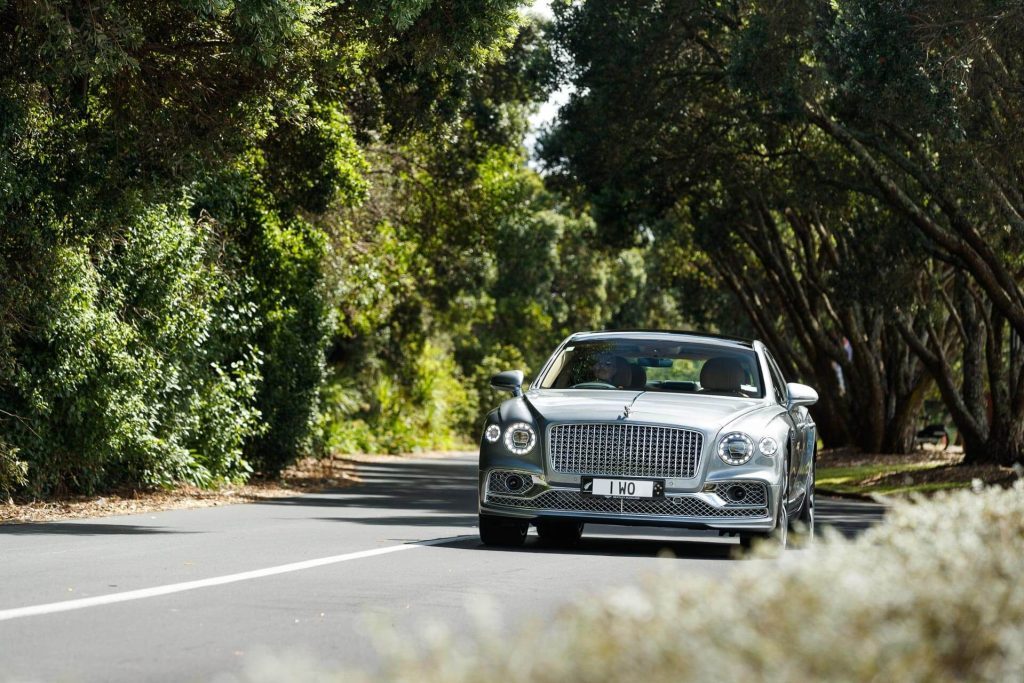
It’s best in the all-round Bentley mode but you can go softer with Comfort or firmer with Sport. C is ideal for town running, flattening speed bumps but Bentley mode we’d imagine it will stay in most of the time. Go Sport if it’s tight and winding countryside and even then the ride quality remains immaculate.
With torque vectoring by brake it can corner in rather impressive fashion as well. Helping with the lines is good weight balance and plenty of rubber, while adaptive damping does its bit to minimise body roll. The steering is also well sorted, with genuine feedback and excellent weighting.
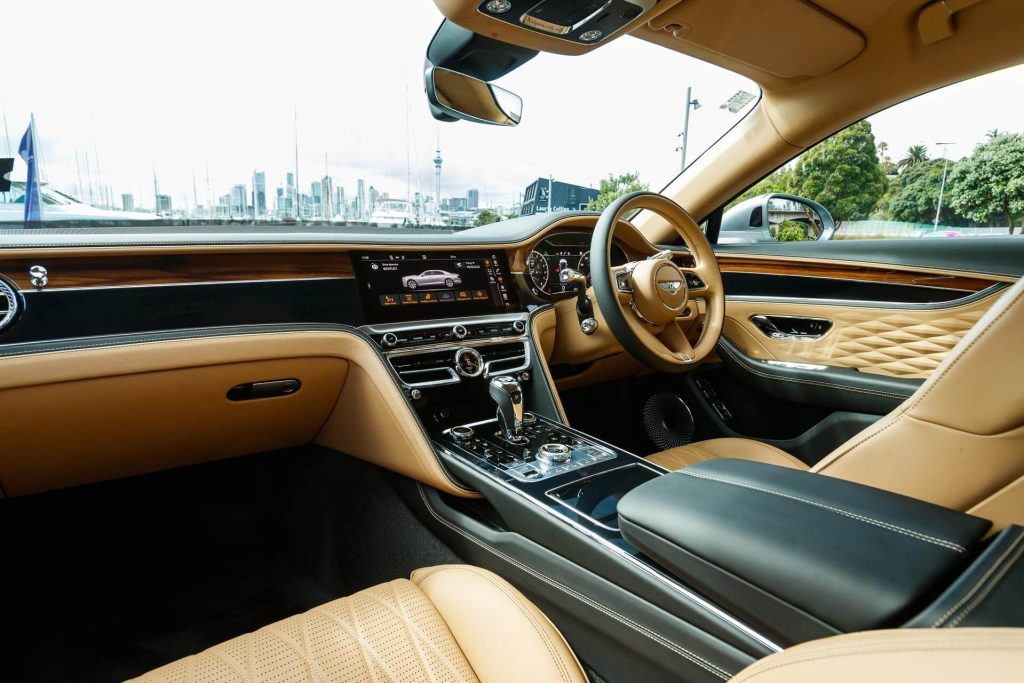
While it’s hardly a sportster it does a decent impression of a sizeable GT. Being a large machine you need to be cognisant of its width on tighter roads. We imagine docking it in town might be a trick too, though self parking should help with that.
Plenty of woah from the stoppers
One aspect that genuinely impresses is braking power. Naturally there’s a mix of regeneration going on amidst conventional retardation but for a vehicle of this stature to pull up in 33m of road from 100km/h is not to be sneezed at.
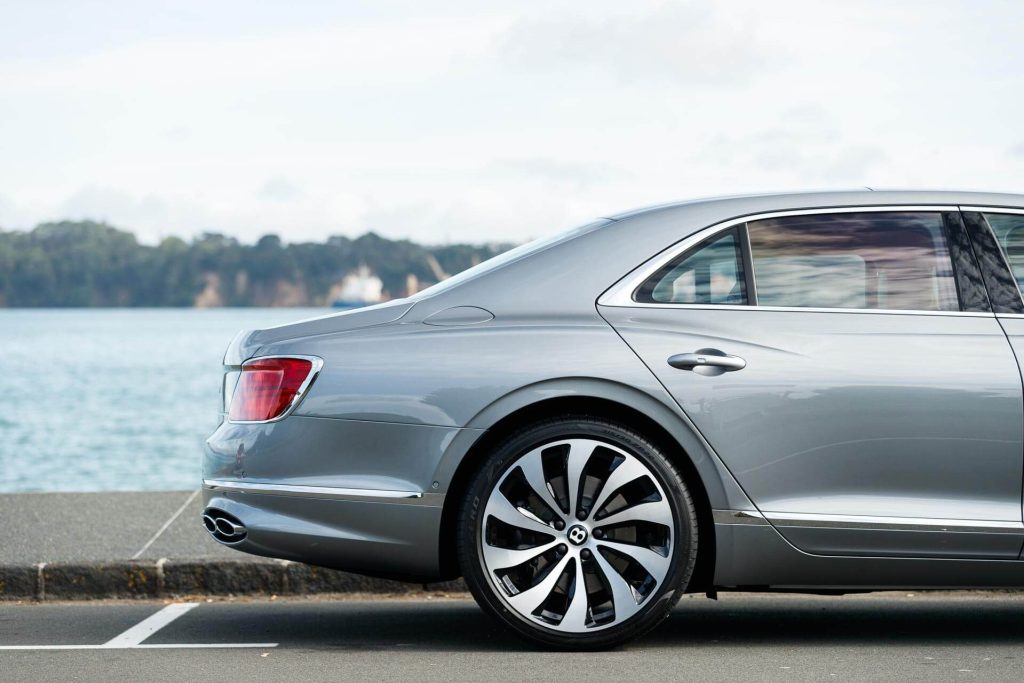
If there’s one aspect of the Flying Spur that doesn’t quite gel it’s engine noise during town running in particular; a V6 engine pales sonically against the bigger multicylinder mills. There’s no sound whatsoever in EV mode.
Out of town there’s a mix of minor road and wind noise and some low-level harmonics from the rubber, most of which masks engine noise, so you seldom notice the engine running. In slower urban driving and on lighter throttle openings acceleration can seem lethargic with the V6, though to be fair if you’ve charged up you should be in EV mode around town.
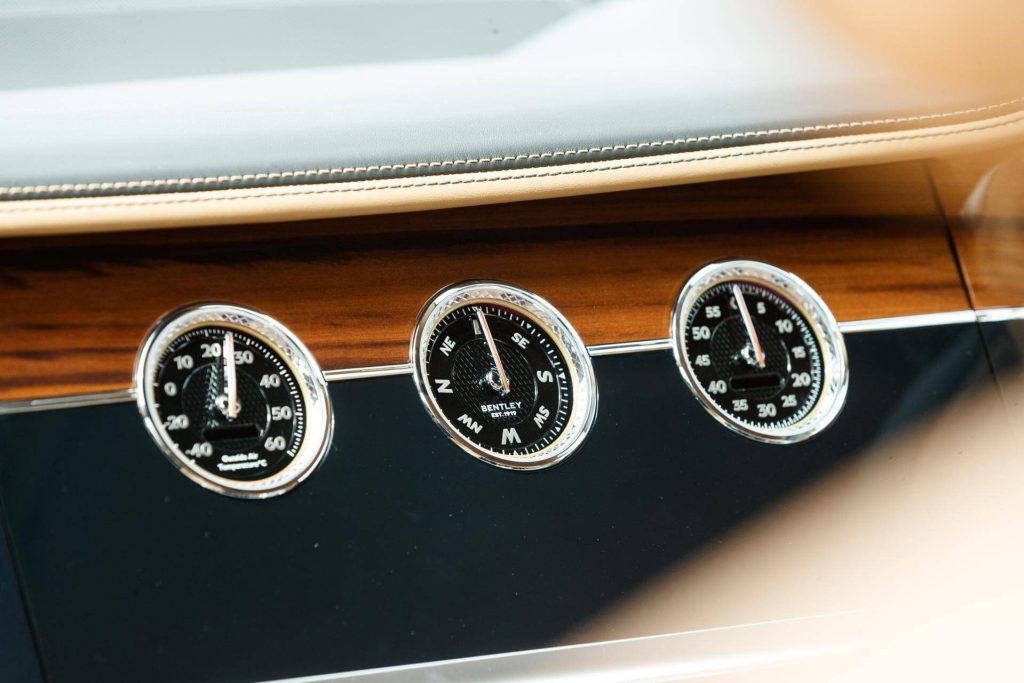
Step on the gas sufficiently to get both systems activated, and this hauls away with proper intent. One other aspect in town warrants a mention; the thick A pillar on the passenger side can easily hide vehicles approaching from your left at T-intersections. It really pays to look twice.
Fully loaded
This particular evaluation car, a Mulliner variant, has it all, right down to leather work that would make Gucci proud. The base car retails for $379,217.39. Really? What’s with the cents on a sticker price like this?

The Mulliner pack includes 22-inch black painted and bright machined alloy wheels, diamond leather quilting on the seats, 3D leather door cards, leather headlining, sports pedals, a special finish for the fuel filler cap, a metal oil cap, and embroidered Bentley emblems ($38,568.48).
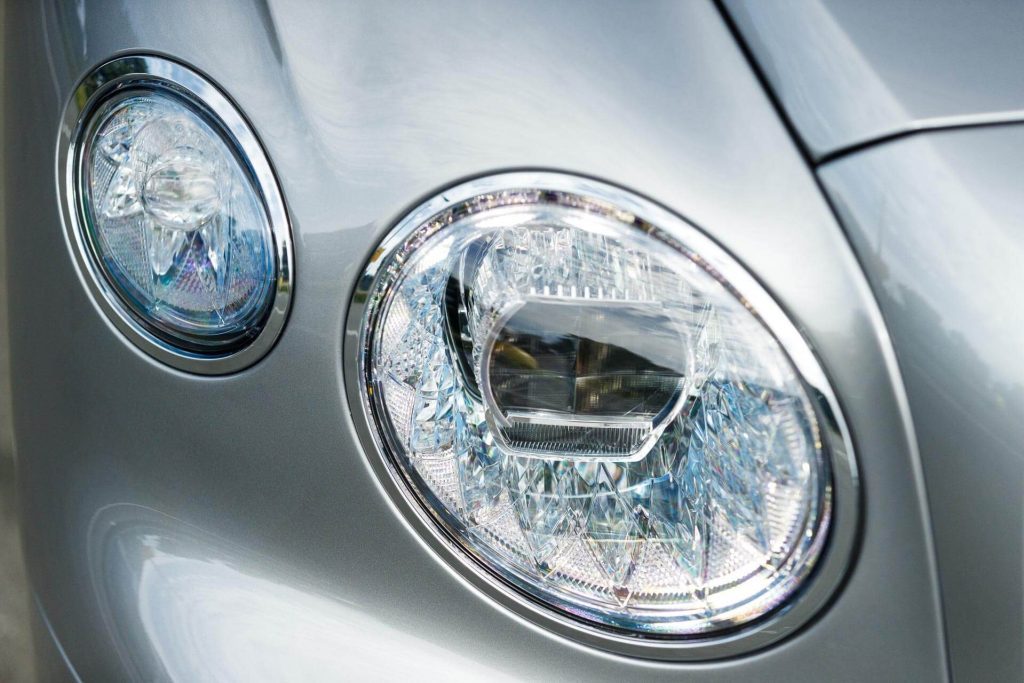
There are over 20 shades of silver, this particular one being Hallmark ($11,692.32), and inside a special liquid amber over gloss black veneer adds $9430.91. This gets City Specification as part of the Mulliner pack but Touring specification adds $16,103.34 (includes items like Adaptive Cruise, Head-Up display).
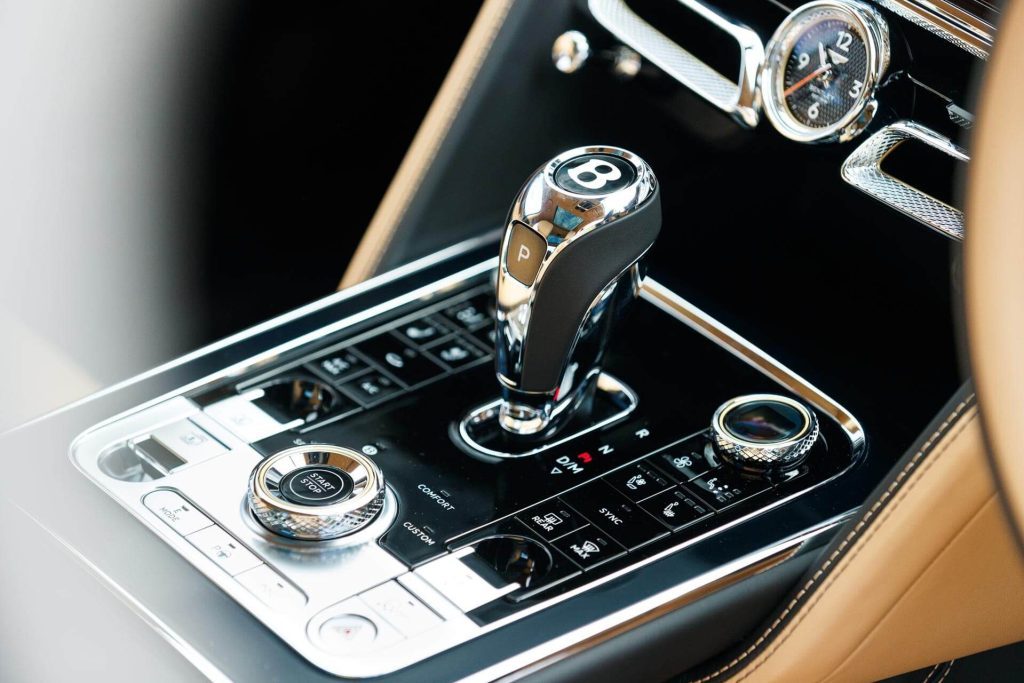
Other cost options include mood lighting ($4833.49), diamond knurling ($5566.60), an illuminated Flying B radiator mascot in polished stainless ($8498.99), chromed lower bumper and grille ($2460.23), panoramic tilt and slide sunroof with twin blinds and vanity mirrors ($6336.96), a B&O for Bentley sound system ($13,431.87) and Bentley’s Rotating Display ($12,089.92).
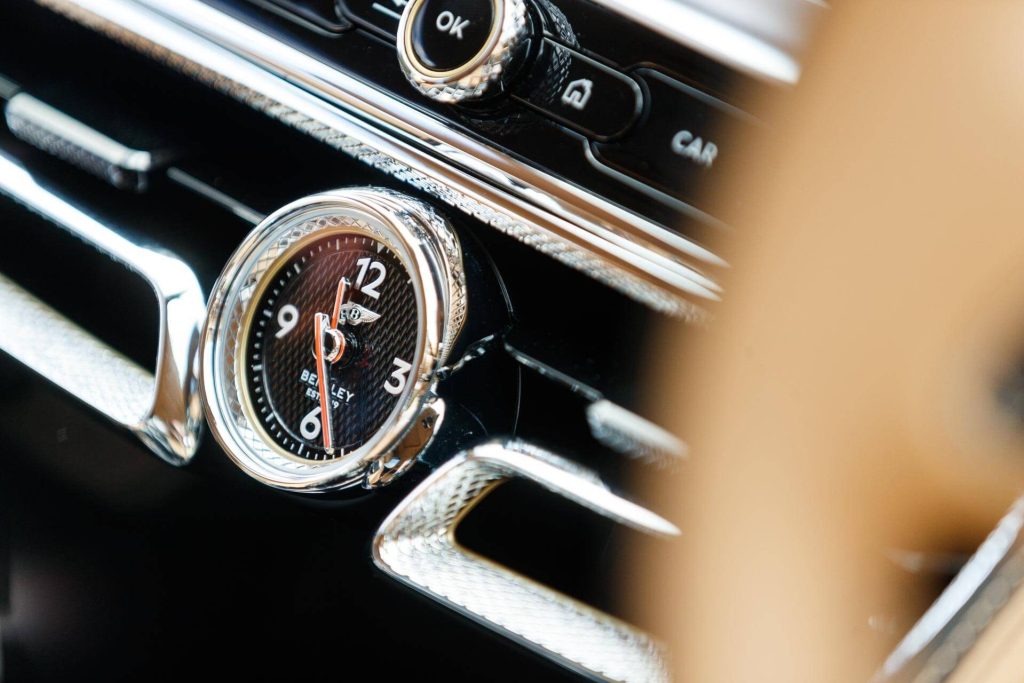
These and other options added $141,749.20 to the bottom line, for a total of $520,966.59. Add GST and the grand total comes to $605,786.58.
We’ve only brushed the surface here but the Flying Spur hybrid clearly represents the new beginnings for a long established brand.
It’s sad to see the W12 go but who’d have thought a Bentley with a potential overall fuel use of 3.2L/100km would ever be a thing?
| Model | Bentley Flying Spur Hybrid |
| Price | $379,217 |
| Clean Car Discount | Neutral $0 |
| Engine | 2894cc, V6, T, DI |
| Power/Torque | 306kW/550Nm |
| Hybrid Total Output | 400kW/750Nm |
| Battery | 18kWh |
| Drivetrain | 8-speed twin-clutch/ on-demand AWD |
| Fuel Use | 11.5L/100km |
| C02 Output | 73g/km |
| 0-100km/h | 4.41sec |
| 80-120km/h | 2.82sec (79.61m) |
| 100-0km/h | 33.16m |
| Stability systems | ABS, ESP, TV |
| Safety | AEB, ACC, BSM, LDW, RCTA, ALK, AHB |
| Luggage capacity | 351L |
| Tow rating | Not rated to tow |
| Service intervals | 12 months/16,000km |
| Fuel capacity | 80L |
| Warranty | 5 years/unlimited km |
| ANCAP rating | Not yet rated |
| Weight | 2505kg |


